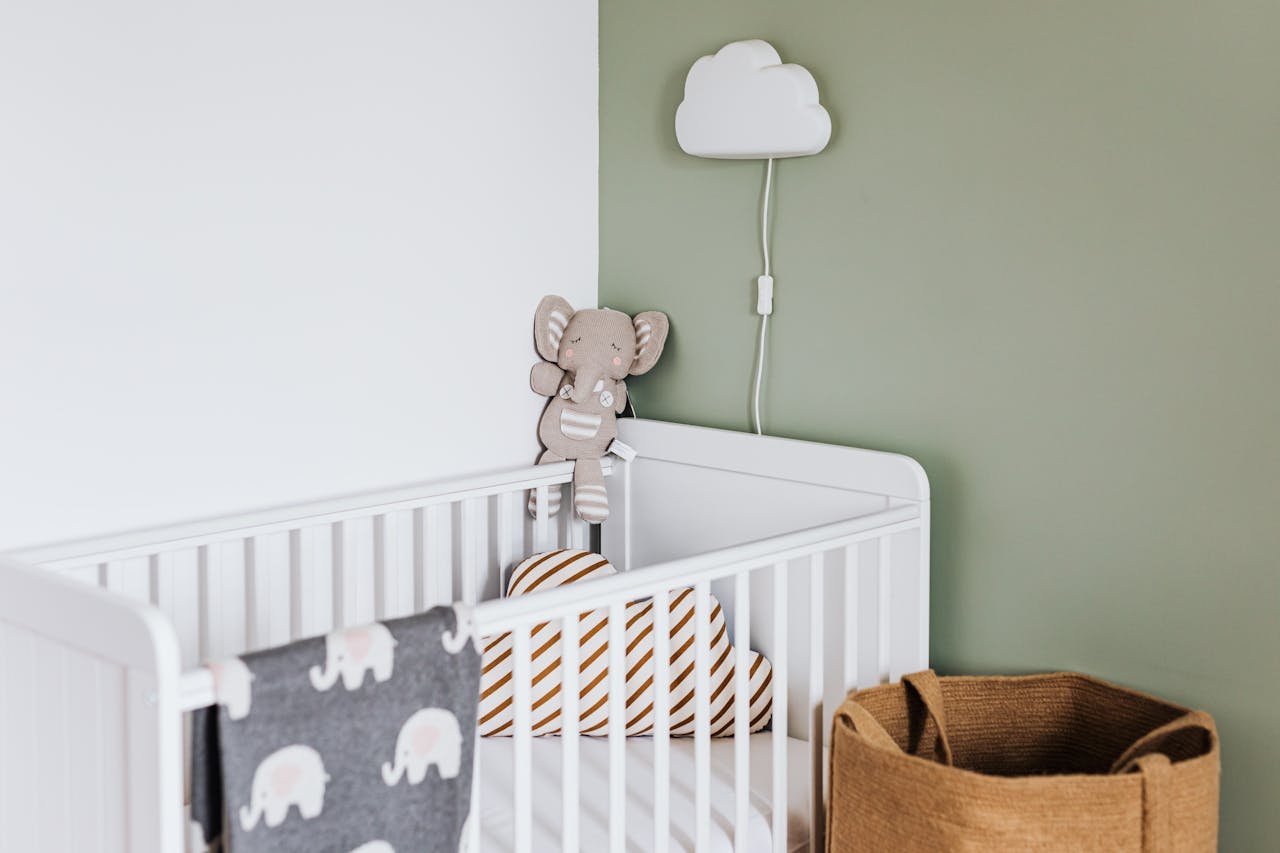How To Create A Minimalist Nursery That Grows With Your Baby
How do you decide what you really need? What will grow with your baby instead of being replaced after a few months? These are common concerns for many parents, especially those aiming to create a minimalist, functional space.
Author:Michael RachalReviewer:Finn WildeDec 13, 20246.5K Shares144.5K Views

Creating a nursery for your baby is one of the most exciting parts of preparing for their arrival. But with so many products and décor ideas out there, it can also feel overwhelming.
How do you decide what you really need? What will grow with your baby instead of being replaced after a few months? These are common concerns for many parents, especially those aiming to create a minimalist, functional space.
A minimalist nursery is more than just a design choice. It’s about simplifying your environment, reducing clutter, and focusing on what truly adds value for you and your baby. This guide will help you design a nursery that balances practicality and style while being mindful of sustainability and your budget.
Prioritise Safety And Sustainability
Safety should always come first when setting up a nursery. Babies are naturally curious and will interact with everything around them, so it’s important to choose materials and products that are safe for them. Avoid furniture or bedding that contains harsh chemicals or synthetic fabrics that could irritate sensitive skin.
Sustainability is another factor to consider when choosing nursery items. Babies outgrow things quickly, so investing in high-quality items that last longer helps reduce waste.
For example, kids beddingmade from bamboo is not only soft and comfortable but also an eco-friendly choice. Bamboo grows quickly and doesn’t require harmful pesticides, making it a better option for the environment. Choosing sustainable products supports your values while providing your baby with a safe and healthy space.
When selecting nursery furniture, look for sturdy pieces with smooth edges to prevent injuries. Avoid overcrowding the room with too many items. A clear, open space is safer for babies and easier for parents to manage.
Choose Multi-Functional Furniture
In a minimalist nursery, every item should serve a purpose - and ideally, more than one. Multi-functional furniture helps maximise the use of space while adapting to your baby’s needs as they grow.
For example, a changing table that doubles as a storage unit or dresser can save both money and space. Hidden storage is another feature to look for in nursery furniture. Ottomans with built-in storage or under-cot drawers are perfect for stashing nappies, clothes, or toys without adding visual clutter. These pieces keep the room organised while maintaining a clean and minimalist appearance.
Compact, foldable furniture is another smart option. It’s ideal for small rooms and can be easily stored when not in use. By choosing versatile pieces, you’ll create a functional nursery that adapts to your baby’s changing needs.
Prioritise Neutral Colours And Timeless Design
The colours and design of the nursery set the tone for the entire space. Neutral tones like whites, creams, greys, and soft pastels are perfect for a minimalist nursery.
These shades create a calm and soothing environment, which is ideal for both babies and sleep-deprived parents. Neutral colours are also incredibly versatile, making it easy to update the room’s look as your baby grows without the need for a full makeover.
Timeless furniture designs are another important consideration. Opt for pieces with clean lines and classic finishes that won’t go out of style. Avoid trends that might feel outdated in a few years. For instance, a simple white cot or a wooden dresser with minimal detailing can work seamlessly as your baby transitions into toddlerhood and beyond.
Add A Touch Of Personality Without Overcrowding
A minimalist nursery doesn’t mean it has to be devoid of charm or personal touches. Thoughtful decorcan make the space feel warm and inviting without overwhelming it. Focus on simple, meaningful items that reflect your family’s personality.
For example, a framed photo of your baby, a custom name print, or a few keepsakes can add character to the room. Choose wall art or decor pieces that are subtle and align with the overall aesthetic. Avoid adding too many decorative elements, as this can make the room feel cluttered.
By limiting the number of decor items, you create a space that feels balanced and intentional rather than chaotic. Remember, less is more when it comes to minimalism.
Focus On Organisation
Keeping a nursery organised is easier if you plan ahead. Babies come with a surprising number of belongings, from clothes to toys, and it’s easy for these to pile up quickly.
Use storage solutions like bins, shelves, or under-cot drawers to keep everything in its place. Label storage containers so that it’s easy to find what you need, even during the middle of the night. Group similar items together, such as nappies, baby clothes, and feeding essentials, to make things more manageable.
Toy rotation is a great way to keep clutter under control. Store most of your baby’s toys out of sight and only keep a few favourites in the nursery. Swap them out regularly to keep things fresh for your child without overcrowding the space.
Design For The Future
A minimalist nursery isn’t just about what you put in the room—it’s also about what you leave out. Avoid filling every corner of the space with furniture or decor. Instead, leave room for the nursery to evolve as your baby grows.
For example, the open floor space where you might play with your baby now could later become an area for a small table and chairs or a bookshelf. By leaving room to add new pieces, you ensure the nursery remains functional and adaptable.
An adaptable layout is also key. Position furniture in a way that can easily be rearranged as your needs change. For example, place the cot in a central location that could later fit a bed or play mat. This flexibility ensures your nursery remains a comfortable and practical space for years to come.
Designing a minimalist nursery is about creating a space that works for you and your baby, both now and in the future. By focusing on functional furniture, timeless design, and smart storage, you can achieve a clutter-free room that feels calm and inviting.
A well-planned minimalist nursery isn’t just visually appealing—it also saves you time, money, and effort in the long run. It grows with your child, adapting to their needs while remaining practical and stylish.

Michael Rachal
Author
Michael Rachal believes that luxury lies in the details. With over 20 years of experience in the luxury travel industry, he has crafted hundreds of bespoke itineraries for clients seeking personalized, unforgettable experiences.
Whether guiding clients through private cultural tours or curating culinary journeys with world-renowned chefs, Michael ensures that each trip is tailored to perfection.
His ability to anticipate needs and exceed expectations has earned him a reputation as a leading expert in luxury travel.

Finn Wilde
Reviewer
For Finn Wilde, the wilderness is more than just a destination - it’s a way of life. Over the past decade, he has led multiple expeditions in some of the world’s most remote regions, from the icy fjords of Greenland to the rugged trails of Patagonia.
Finn emphasizes sustainability in all of his adventures, helping participants connect with nature while promoting responsible exploration. His expeditions inspire individuals to explore the great outdoors while fostering a deep respect for the environment.
Latest Articles
Popular Articles